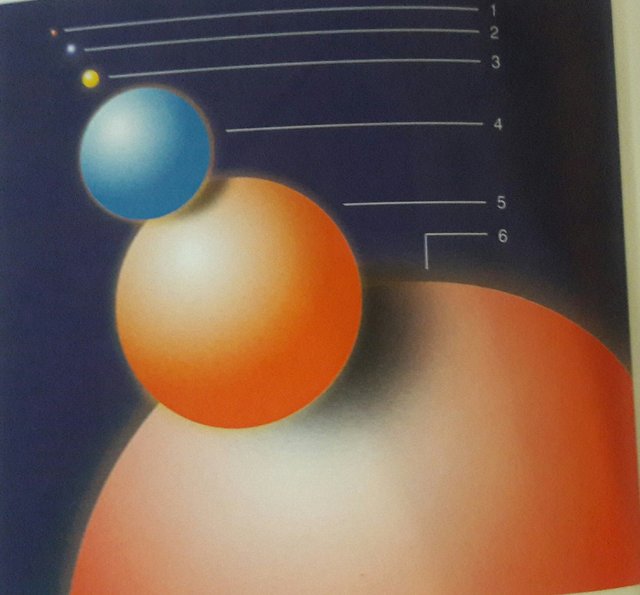The universe...

a greeting to all stemians, According to the most accepted theory, the universe originated about 15,000 million years ago, from a great explosion (the Big Bang), in which matter, energy, space and time was created (and, therefore, it makes no sense to speak before that instant). At that time, at one time, the universe was compressed into a minuscule volume, in a state of practically infinite density and temperature. Since then it has not ceased to expand. A few minutes after the initial explosion, atomic particles came together to form helium and hydrogen, which after millions of years gave rise to galaxies, stars and the universe as we know it today.

the expansion of the universe
the surface of an inflating balloon is a good two-dimensional analogy of the expanding universe. an observer located at one point (Galaxy) on the surface sees that all other points (galaxies) are moving away: there is no privileged point on the surface of the balloon.

the light waves have a certain length (figure above), if the radiation source moves towards the receiver (figure on the right), a shorter wave is received, with a higher frequency. If, on the other hand, the source moves away (figure below), it increases the wavelength and decreases the frequency that the receiver picks up. the high frequency light is blue; when it decreases, it tends to red. this property has allowed astronomers to know at what speed a galaxy moves away from us.

The red shift
in the following image positioned below, the red light from a galaxy indicates that it is moving away from us; the blue light indicates that the galaxy is moving away faster and further from the earth than the previous galaxy. Therefore, the shift of light towards blue allows us to deduce the distance a given galaxy is from us.



The galaxies


galaxies, formed by tens of billions of stars and with diameters of tens of thousands of light years, are the basic constituent elements of the universe. They are classified according to their shape (above) into four main types: epirals, barred spirals, elliptical and irregular.
Milky life (our galaxy, one of the more than 100,000 million galaxies in the universe) is spiral-type (right, left) has the shape of a lenticular core surrounded by a disk containing the arms of the spiral (right, right). It has a diameter of about 100,000 light years. The sun (one of the billions of stars that make it up) is about 15 billion light-years from its center.
The stars
Stars are the most important constituent elements of galaxies. Varian in size, brightness and surface temperature. When you look at them, you can see differences in the color of the light they emit. The hot sun blues; the cold reds. Stars are born, evolve and die.


sources of information:
- https://www.space.com/52-the-expanding-universe-from-the-big-bang-to-today.html
- https://www.nationalgeographic.com/science/space/universe/origins-of-the-universe/
- https://society6.com/product/the-universe-z0v_print

Being A SteemStem Member
thanks for the support I hope to be part of the community #steemstem. salutations